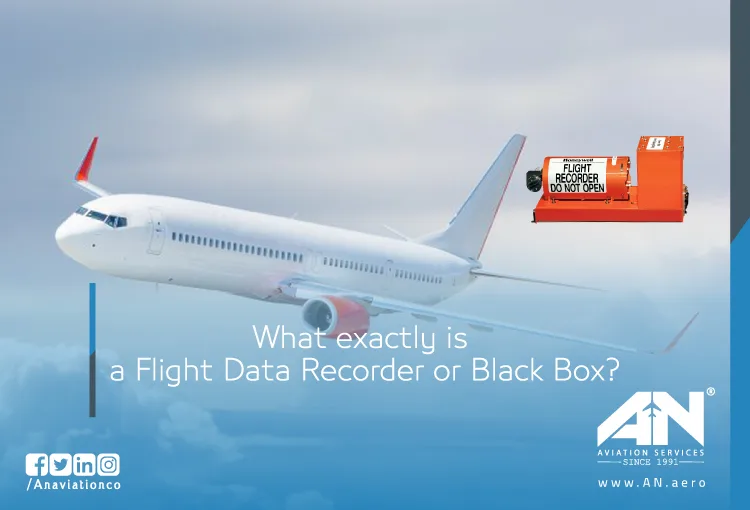
When it comes to aviation safety, one device stands out as a critical piece of equipment: the Flight Data Recorder (FDR), commonly referred to as the black box. Despite its name, this vital device is not black at all—it’s usually bright orange to ensure it can be easily located after an aircraft incident. But what is a black box, and why is it such an integral part of modern aviation? Let’s take a closer look at the technology, purpose, and role of the black box in ensuring aviation safety.
The Basics of a Black Box
A plane black box is a sophisticated data recording device designed to collect and store key flight data from an aircraft. It serves two primary purposes: to assist investigators in understanding the events leading up to an accident and to improve safety standards across the aviation industry.
Typically, commercial aircraft are equipped with two black boxes:
- Flight Data Recorder (FDR): This device records essential flight parameters, including altitude, speed, heading, engine performance, and more.
- Cockpit Voice Recorder (CVR): This records conversations between the flight crew and communications with air traffic control, as well as any ambient sounds in the cockpit.
Together, these devices provide a comprehensive picture of what happened during a flight, whether routine or during aircraft crashes.
The Technology Behind the Black Box
Modern black boxes are built to withstand extreme conditions. The crash survivable memory unit (CSMU) is enclosed in stainless steel or titanium, ensuring it can endure massive impact forces, high-pressure environments, and temperatures as high as 2,000°F (1,100°C).
Additionally, black boxes are equipped with an underwater locator beacon that emits a signal for up to 30 days, helping search teams locate the device even if it’s submerged deep in water. This feature proved crucial during investigations like the Air France Flight 447 crash in 2009.
Black boxes are now often equipped with solid-state recorders, which are more durable and reliable compared to older magnetic tape technology. These advancements make modern black boxes capable of storing hours of detailed flight data and cockpit recordings.
How Does a Black Box Work?
The black box operates through a Flight Data Acquisition Unit (FDAU), which collects information from various aircraft sensors. This data includes everything from the position of the control surfaces to fuel levels and weather conditions. The FDAU then transmits this data to the Flight Data Recorder (FDR), where it’s stored for future retrieval.
In the event of an accident, investigators retrieve the data to recreate the flight’s final moments. The National Transportation Safety Board (NTSB), along with other agencies, relies heavily on black box data for accident investigations. By analyzing this information, experts can determine what went wrong and recommend safety improvements to prevent similar incidents in the future.
Real-Life Examples of Black Box Investigations
The significance of the black box is best illustrated through high-profile cases. One such example is the investigation into Air France Flight 447, which tragically crashed into the Atlantic Ocean. The black box data revealed critical information about the flight crew’s actions, equipment malfunctions, and environmental factors, helping investigators piece together the sequence of events.
Similarly, the black box played a pivotal role in the aviation safety improvements that followed the crash of TWA Flight 800 in 1996. The data provided by the FDR and CVR helped uncover issues related to the fuel tank, leading to design changes in commercial aircraft.
Why Is the Black Box Essential for Aviation Safety?
The black box is not just a recording device; it is an invaluable tool for ensuring the safety of air travel. Here’s why it’s so crucial:
- Accident Investigations: By providing a detailed record of flight parameters and cockpit conversations, the black box helps investigators identify the root causes of accidents.
- Improving Safety Standards: Findings from black box data often lead to changes in aircraft design, pilot training, and operational protocols.
- Accountability and Transparency: The data ensures that airlines, manufacturers, and regulators are held accountable for maintaining high safety standards.
Black boxes have been a cornerstone of aviation safety for decades, playing a key role in making air travel one of the safest modes of transportation.
The Future of Black Boxes
While black boxes are incredibly reliable, there is ongoing discussion about upgrading to real-time data recording solutions. Some experts suggest using cloud-based technology to transmit flight data in real time, eliminating the need to recover physical devices after a crash. This concept is particularly appealing for incidents over remote areas, where retrieving a black box can be challenging.
However, challenges such as data security, bandwidth limitations, and costs have slowed the adoption of real-time systems. Until these obstacles are addressed, the traditional black box remains the gold standard for recording data in aviation.
Conclusion
The black box is a silent yet indispensable guardian of the skies. From its robust design to its critical role in accident investigations, this recording device has transformed the way we understand and improve aviation safety. As technology continues to evolve, we may one day see real-time data transmission systems take center stage. But for now, the black box remains a symbol of resilience and progress in the world of commercial aircraft and beyond.

